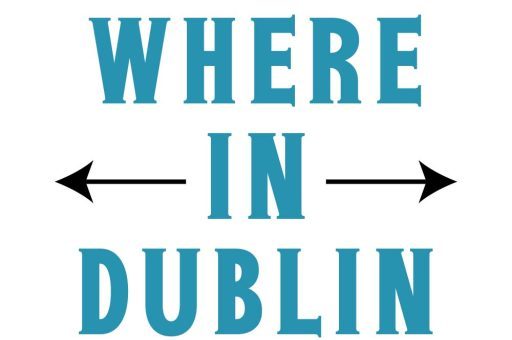If navigating Dublin’s train system feels overwhelming, don’t worry. Dublin, though a bustling capital, has a well-connected and organized rail network that makes traveling both within the city and across Ireland relatively easy. From my own personal experience, catching a train in Dublin can be smooth if the right stations and services are known. This guide will walk through everything, including the best stations, ticketing tips, and little-known insights to make train travel stress-free and even enjoyable.
Let’s Understand Dublin’s Rail Network
Dublin’s rail network is primarily operated by Irish Rail (Iarnród Éireann). It consists of commuter trains, regional services, and longer-distance intercity routes. The network is divided into two main types:
Commuter Trains: These serve the city and surrounding counties like Kildare, Meath, Wicklow, and Louth. Popular lines include the DART (Dublin Area Rapid Transit) and commuter rail lines.
Intercity Trains: These connect Dublin to major cities like Cork, Galway, Limerick, and Belfast.
Trains are known for their punctuality compared to buses in Dublin, and stations are generally easy to navigate.
Main Train Stations in Dublin
Dublin has a few key stations where most travelers catch trains. Knowing them is the first step to smooth travel.
1. Heuston Station
Heuston is one of the largest and busiest stations in Dublin, serving as a gateway for west, south, and midlands routes.
Destinations: Cork, Limerick, Galway, Waterford, and Kilkenny.
Facilities: Ticket counters, cafés, ATMs, waiting areas, and car rental services.
Tips: If catching a train to the south or west, Heuston is the place to go. Arrive early, especially during peak hours, as it can get crowded.
From my overall experience, Heuston is well-signposted, making it easy for first-time visitors to find their platforms.
2. Connolly Station
Connolly is the main hub for northbound and eastbound trains. It is also integrated with the DART and LUAS (tram) services, making it a key interchange.
Destinations: Belfast, Dundalk, Drogheda, Sligo, and commuter lines around Dublin.
Facilities: Multiple ticket machines, cafés, waiting areas, and shops.
Tips: Connolly is excellent for trips to Northern Ireland or commuting to northern suburbs. If traveling to Belfast, trains depart from here.
From personal experience, Connolly can be hectic during rush hours, so always check the electronic boards for platform updates.
3. Pearse Station
Located in the city center, Pearse Station primarily serves the DART and commuter lines heading south and east.
Destinations: Howth, Malahide, Greystones, and Bray.
Facilities: Small cafés, ticket offices, and seating areas.
Tips: This station is ideal for seaside trips along Dublin’s coast.
4. Grand Canal Dock Station
A smaller station near the Docklands, Grand Canal Dock is convenient for office workers and tech hub visitors.
Destinations: DART services to Bray, Greystones, and northern suburbs.
Facilities: Minimal, mostly ticket machines.
Tips: Best for commuters in the Docklands or visitors staying nearby.
5. Howth and Malahide Stations
These two are terminal stations on the DART line, located in the northern suburbs.
Highlights: Scenic seaside views, ideal for weekend trips.
Tips: Trains run frequently during peak hours and less so late at night. Booking isn’t necessary for local trips.
Types of Train Services
Understanding the type of service helps plan travel efficiently.
DART (Dublin Area Rapid Transit)
The DART runs along the coast from Malahide and Howth in the north to Greystones in the south.
Frequency: Every 10-20 minutes during the day.
Tickets: Can be bought at stations or via the DART smartcard.
Experience: From my own personal experience, the DART is perfect for city sightseeing while traveling. The views of Dublin Bay are spectacular.
Commuter Rail Services
These trains serve suburban towns and are essential for daily commuters. Popular lines include:
Northern Line: Dublin to Dundalk or Drogheda.
Western Line: Dublin to Maynooth, Newbridge, or Athlone.
South-Western Line: Dublin to Kildare or Portlaoise.
Intercity Trains
Longer routes connect Dublin to other Irish cities:
Dublin to Cork: Around 2.5 hours, high-speed trains available.
Dublin to Galway: Approximately 2.5 hours via Heuston Station.
Dublin to Limerick and Waterford: Trains depart from Heuston.
Dublin to Belfast: Connolly Station is the departure point; the Enterprise service takes 2 hours.
How to Buy Tickets
Ticket Options
At the Station: Ticket counters and machines are available at all major stations.
Online: Irish Rail website allows booking for intercity and commuter trains.
Mobile App: Digital tickets are convenient for commuters.
Leap Card: Works on DART and commuter trains for easy tap-and-go travel.
Tips for Buying Tickets
Buy tickets early for intercity trains to get lower prices.
For DART and short commuter trips, using a Leap Card is cheaper and quicker.
Check return tickets—they’re often more economical than two singles.
Navigating Dublin Train Stations
Platform Information
Most stations have clear signage, but during peak times, platforms may change.
Electronic boards update real-time departures.
Always double-check the platform 10 minutes before departure.
Accessibility
Major stations like Heuston and Connolly are wheelchair accessible.
Lifts, ramps, and accessible toilets are available.
Staff can assist travelers with reduced mobility if requested in advance.
Safety Tips
Keep bags close at all times.
Avoid empty carriages late at night.
Watch your step while boarding; some platforms are higher than the train floor.
Best Stations for Tourists
If the goal is sightseeing rather than commuting:
Connolly Station: Ideal for Northern Ireland trips and city center access.
Pearse Station: Convenient for coastal trips and walking to tourist areas.
Heuston Station: Close to Guinness Storehouse, Kilmainham Gaol, and Phoenix Park.
From my own personal experience, starting journeys from these stations ensures a smoother and more scenic experience.
Tips for First-Time Train Travelers in Dublin
Plan Ahead: Check timetables online to avoid long waits.
Travel Off-Peak: Trains can get crowded between 7:30-9:30 AM and 4:30-6:30 PM.
Use a Leap Card: Simplifies payments for DART and commuter lines.
Keep Tickets Handy: Always have tickets ready for inspection.
Check Connections: Some regional trains may require transfers at Heuston or Connolly.
Weekend Getaways by Train
Dublin’s train network opens many options for day trips:
Bray: Stunning coastal town reachable by DART in under an hour.
Howth: Picturesque fishing village with seafood restaurants and cliff walks.
Malahide: Famous for its castle and gardens.
Kilkenny: Medieval city accessible via Heuston Station in 1.5 hours.
Cork or Galway: Longer trips for those seeking a full-day adventure.
Hidden Gems Along the Routes
Train journeys aren’t just transportation—they’re experiences. Some scenic highlights include:
Dublin Bay from DART: Stunning coastline views from Sandymount to Howth.
Irish Countryside on the Western Line: Rolling green fields and small villages visible between Dublin and Maynooth.
Waterford via Heuston: River Suir views and medieval architecture along the route.
Final Thoughts
Catching trains in Dublin is easier than it seems. Heuston, Connolly, and Pearse are the key stations to know. DART offers scenic urban and coastal travel, while commuter and intercity trains connect to the rest of Ireland. From my own personal experience, planning ahead, knowing your station, and using a Leap Card are the best ways to avoid stress and enjoy the ride.
Train travel in Dublin is not just about getting from point A to point B—it’s part of the Irish experience. Whether commuting to work, visiting family, or exploring the country, Dublin’s rail network makes it convenient and scenic.



